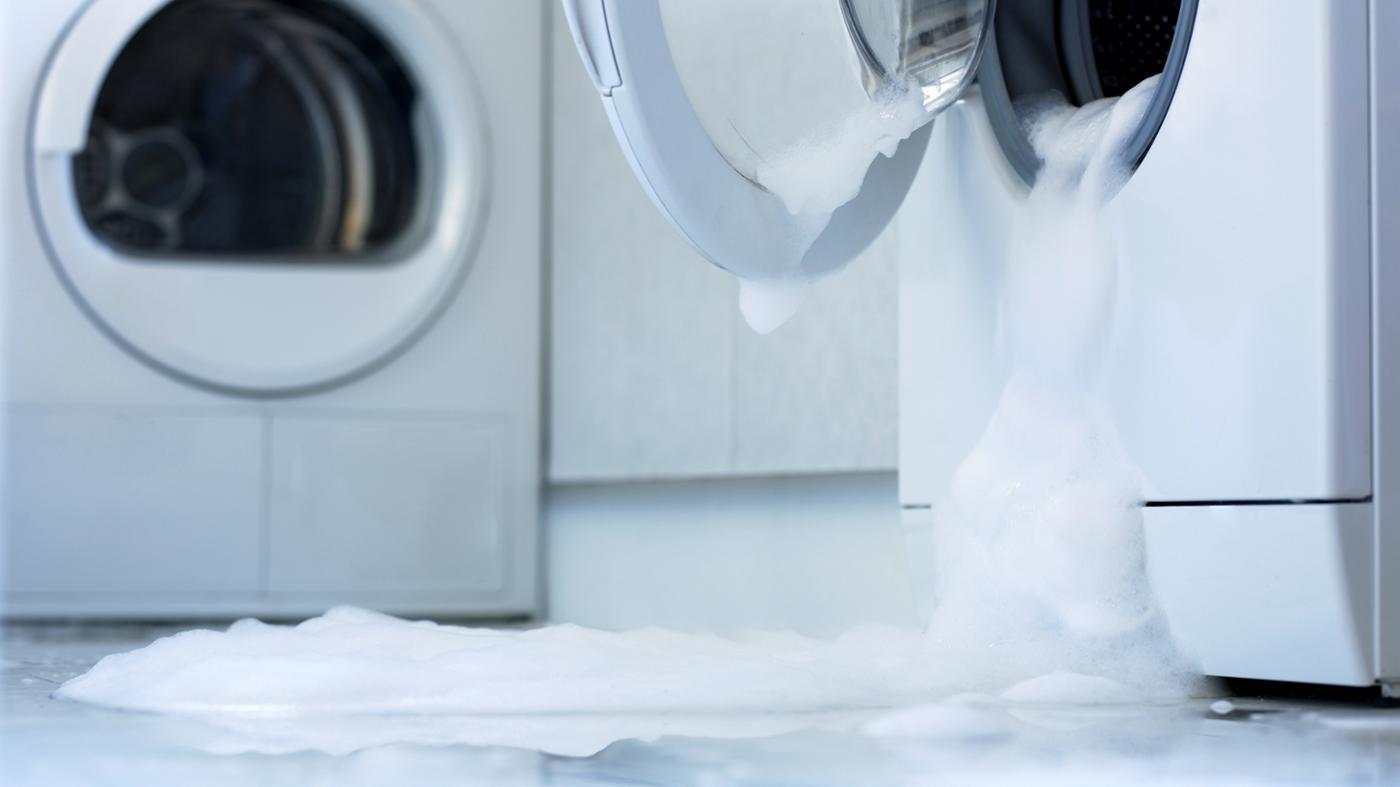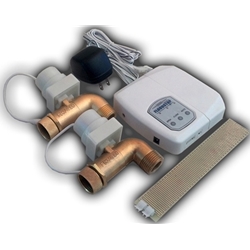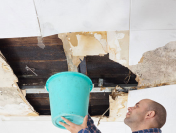Wondering why you have a leaky washing machine? Washing machine leaks can be caused by a range of failures, including ruptured hoses, cracked fittings and aging parts. Using too much detergent is another very common reason for a leaky washing machine. Regardless of the cause, the resulting water damage can be catastrophic, especially if you’re not home! In fact, washing machine-related failures are one of the top 10 leading sources of residential water damage averaging, $5,308 per incident. If you want to avoid the cost and mess of a leaky washing machine, here are 6 affordable do-it-yourself solutions:
1. Turn Off the Water Supply
Here’s the easiest solution of all! Simply remember to turn off the hot and cold water supply valves when the machine is not in use, especially if you are going to be away for a few days. If a valve is not operating properly or is leaking, replace it immediately. Consider replacing dual faucets with a single-lever faucet that is easier to operate and turns off the hot and cold water supply at the same time. You can pick up a single-lever faucet at any plumbing supply or hardware store for about $25.
 2. Check & Replace Supply Hoses
2. Check & Replace Supply Hoses
Failed supply hoses are a leading cause of leaky washing machines. Examine your machine’s supply hoses for blisters, worn tubing, stress cracks or a loose connection. Replace hoses every five years, even if there is no obvious deterioration or wear. For just a little bit more money, you can get braided stainless steel auto-shutoff connector hoses that automatically turn off the water supply to your washing machine if excess water flow is sensed, before catastrophic flooding. These ingenious hoses have no mechanical moving parts during normal operation, do not require a power source and cost only about $20 each.
3. Get a Washer Floor Tray
Slide a plastic water-catching tray under your washing machine to catch drips and leaks. It’s a simple, inexpensive way to prevent water damage to your floor should your washing machine begin to leak. A washer tray is a must in an upstairs laundry rooms to catch water leaks before they drip through floors and ceilings to the rooms below. Cost is around $20.
 4. Install an Automatic Water Shut Off Valve for 24/7 Protection
4. Install an Automatic Water Shut Off Valve for 24/7 Protection
An automatic water shut off valve prevents flooding by immediately turning off the hot and cold water supply as soon as water is detected under or near the washing machine. Water shut off valves are easy to install and provide 24/7 protection. Prices start at under $200. Most models sound an audible alarm; some can be connected to a security system or auto-dialer so you’ll receive notifications when you’re out.
As an added precaution, include a Furman Remote Power Relay that will turn off power to the washing machine and prevent it from pumping water out if the discharge hose is broken or disconnected.
5. Upgrade to an Intelligent Water Shut Off Valve
An intelligent valve allows water to flow only when it senses that the washing machine is turned on. When the wash cycle is complete, it closes the water inlet valves until the washing machine is used again. If the floor sensor detects water, the unit protects against damage by turning off the water supply and the power to the washing machine, in case the leak is caused by a faulty discharge hose. Priced at under $200, this shut off valve is a great investment to protect your home against washing machine leaks, regardless of the cause.
 6. Always Follow the Manufacturer’s Instructions
6. Always Follow the Manufacturer’s Instructions
To avoid a leaky washing machine, always follow the manufacturers instructions on proper usage:
- Never overload a machine.
- Prevent oversudsing by using the recommended type and amount of detergent. Most front loading washers specify low-suds HE (high efficiency) detergent. Use less detergent if you have a water softener.
- Only run the washer when someone is home. Approximately 6% of all washing machine failures occurred in unoccupied homes.
*Source: Insurance Institute for Business & Home Safety (IBHS)




